3 Mb - PapuaWeb
3 Mb - PapuaWeb
3 Mb - PapuaWeb
You also want an ePaper? Increase the reach of your titles
YUMPU automatically turns print PDFs into web optimized ePapers that Google loves.
12 West Irian: A Bibliography<br />
//. 3. Soils 3<br />
The pedological (soil science) investigation of Irian soils began in 1932,<br />
when F.A. Wentholt undertook his first expedition, which carried him.to<br />
five locations on Irian's north coast. Other investigations followed, both<br />
by him and by others, but even today our knowledge is fragmentary.<br />
As the accessibility of many parts of the island is poor, systematic soil<br />
surveys of larger areas are rare. The areas examined for their agricultural<br />
potential are relatively small and most of the investigations tend to<br />
confirm the view, expressed in an early publication on Irian soils by<br />
Mohr, that in general the soil fertility is low. In the main, agricultural<br />
potential is confined to young alluvial valleys and coastal plains.<br />
The first study on Irian soils in general, the one alluded to in the<br />
preceding paragraph, is found in the chapter on New Guinea in Mohr<br />
(1934). At the time the available information was very scanty indeed.<br />
The progress made since is reflected in Van Baren (1954). As a preliminary<br />
introduction to the subject the article has its merits. But it has<br />
the disadvantage that it uses an outdated terminology, which modern<br />
pedologists have since exchanged for a new one, that is utterly unfamiliar<br />
to students of other disciplines. To find his way among its terminological<br />
distinctions, the interested outsider should consult the detailed<br />
inventory of Papua New Guinea soils drawn up by Bleeker (1983). The<br />
work provides a model for the type of description one would wish to see<br />
available to Irian development workers in connection with their manifold<br />
problems with soil fertility. Soils in Irian are of a diversity equal to<br />
that of Papua New Guinea, a diversity which can be summarized as follows:<br />
In the young and flat coastal areas and river estuaries various<br />
types of hydromorphic soils are found, such as alluvial soils, Hydraquents<br />
and Tropaquents, bog and peat soils, Histosols, Fibrists and<br />
Hemists, and acid sulphate soils, Sulfaquents. Locally a range from<br />
saline soils, Halaquepts, to soils having an illuvial clay layer, Natraqualfs,<br />
may be encountered in subrecent marine clayey deposits.<br />
In the southern parts of these same plains, on the lower elevated<br />
shields, older and poorer greyish to yellowish soils with clay illuviation,<br />
Udults, often with hydromorphic features and with whitish horizons or<br />
white and purple coloured mottles, Aquults, and sometimes rich in<br />
hardened material or concretions, Paleaquults to Plintaquults, are<br />
dominant. Northwards, on the slopes of the uplands, we find complexes<br />
of eroded and young soils, Tropepts, and more developed soils, Tropudults,<br />
both often in the Lithic subgroup. In the belt of mountains of<br />
intermediate elevation of the Central Mountain Range variants of complexes<br />
of eroded Udepts, stony or Lithic phases and often hydromorphic<br />
soils, Aquepts, up to poorer more developed soils with clay movement<br />
or with podzolic features, Aquults, are encountered. At the same<br />
elevations in the centre of the island peat soils, Fibrists, are present<br />
in the mossforest zone. The soils in the higher elevated intermountain<br />
valleys consist of Histosols, often flooting, and hydromorphic mineral<br />
soils like Aquepts and transitions of these main groups. Above the tree<br />
limit the soils comprise complexes of shallow and stony soils: Entisols,<br />
3 By J.J. Reynders, Senior Research Officer of the Soils Department,<br />
Utrecht State University, and former Chief of the Soil Survey Service<br />
of the Agricultural Research Institute of West New Guinea.<br />
II Climate, Geology, and Soils 13<br />
sometimes hydromorphic soils, Aquepts, and in the higher parts with a<br />
cryic temperature regime, often containing peaty, Histic, phases. The<br />
highest peaks are covered with eternal snow or have bare stony or<br />
rocky slopes.<br />
In the Northern Dividing Range complexes of brown to yellowish<br />
younger and older soils with clay illuviation, and in the range of shallow<br />
and stony to deeper and sometimes hydromorphic profiles, Inceptisols<br />
and Ultisols, are dominant.<br />
In some limestone areas, also on several islands, older red soils, Rhodustalfs,<br />
and shallower soils rich in carbonate, Rendolls, form the<br />
transition between smaller and greater karstic areas.<br />
At the foot of the slopes of many mountains colluvial fans and transitions<br />
into alluvial fans bear younger soils, Entisols and Inceptisols, besides<br />
other deposits, like stone streams with coarse boulders.<br />
At the foot of the Cyclop Mountains, very strongly weathered, old<br />
and purplish red soils rich in ironoxydes, Oxisols, are found.<br />
Narrow beaches and ridges are composed of sandy soils or Psamments.<br />
In soil investigation and mapping two periods may be distinguished,<br />
viz. the pre-World War II period of scarce, local reconnaissance mapping,<br />
and the post-war, more intensive type of mapping with the aid of<br />
aerial photographs, carried out mainly to investigate agricultural potential<br />
in plains, valleys and other areas, see Reynders (1961a).<br />
In the past the influence of man on the soil was very limited (local<br />
erosion or landslides). Recently in some coastal regions (e.g. to the<br />
south of Geelvink Bay) numerous wild occupations are taking place<br />
without environmental factors being taken into account, which may<br />
cause soil deterioration in the future.<br />
A collection of results of numerous soil surveys carried out in Irian up<br />
to 1962 is presented in Haantjes et al. (1967). In this work attention is<br />
paid to soil forming factors of the major soil groups, which are illustrated<br />
on a coloured soil map, 1:2.500,000. References are given here<br />
to all published and unpublished soil reports and surveys and investigations<br />
in both the eastern and the western part of the island. These<br />
unpublished or mimeographed reports are present in the library of the<br />
Agricultural Research Institute at Manokwari.<br />
General information on Irian soils may also be drawn from various<br />
chapters of the well-known handbook by Mohr et al. (1972). On nutritive<br />
elements, deficiencies and tropical crops, see Schroo (1959, 1961,<br />
1964a, 1964b). For publications on soils, soil suitability and shifting<br />
cultivation, see Reynders (1961a, 1961b, 1962a, 1962b, 1962c, 1964).<br />
Some articles covering the field between geology and pedology are<br />
Ashizawa (1971) and Reynolds et al. (1972). On sheet IX, South-east<br />
Asia, of the Soil Map of the World, scale 1:5,000,000, the soil distribution<br />
of Western New Guinea is given. The explanatory text is<br />
presented in vol. IX of the FAO/UNESCO publication, 1976.<br />
IIA. Bibliography<br />
Abstracts<br />
1974 Proceedings of the 1-3 April conference at San Antonio,<br />
Texas, Abstracts of the meetings of the American Association<br />
of Petroleum geologists and SEPMI.



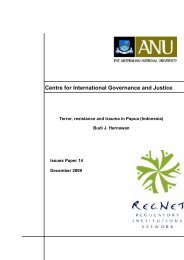
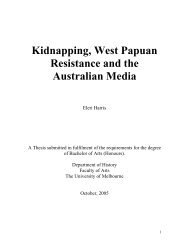
![[1958: Gahuku]. - PapuaWeb](https://img.yumpu.com/25139694/1/190x245/1958-gahuku-papuaweb.jpg?quality=85)
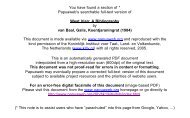

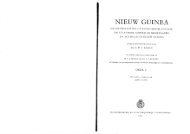
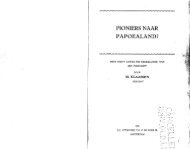
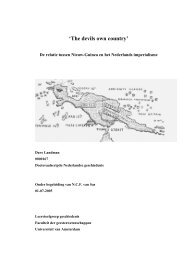
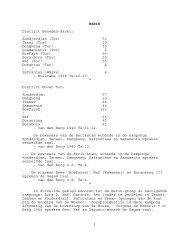
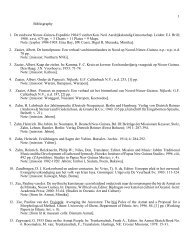

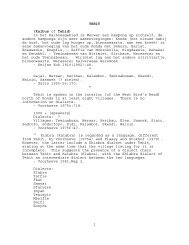
![1 EKARI (EKAGI) [Map] (cf S&C) Akaromani Apoejai ... - PapuaWeb](https://img.yumpu.com/19731685/1/190x245/1-ekari-ekagi-map-cf-sc-akaromani-apoejai-papuaweb.jpg?quality=85)
![WUTUNG [passim in text] Wutung (Oenaki, Oinåke) - Friederici ...](https://img.yumpu.com/15960045/1/190x245/wutung-passim-in-text-wutung-oenaki-oinake-friederici-.jpg?quality=85)